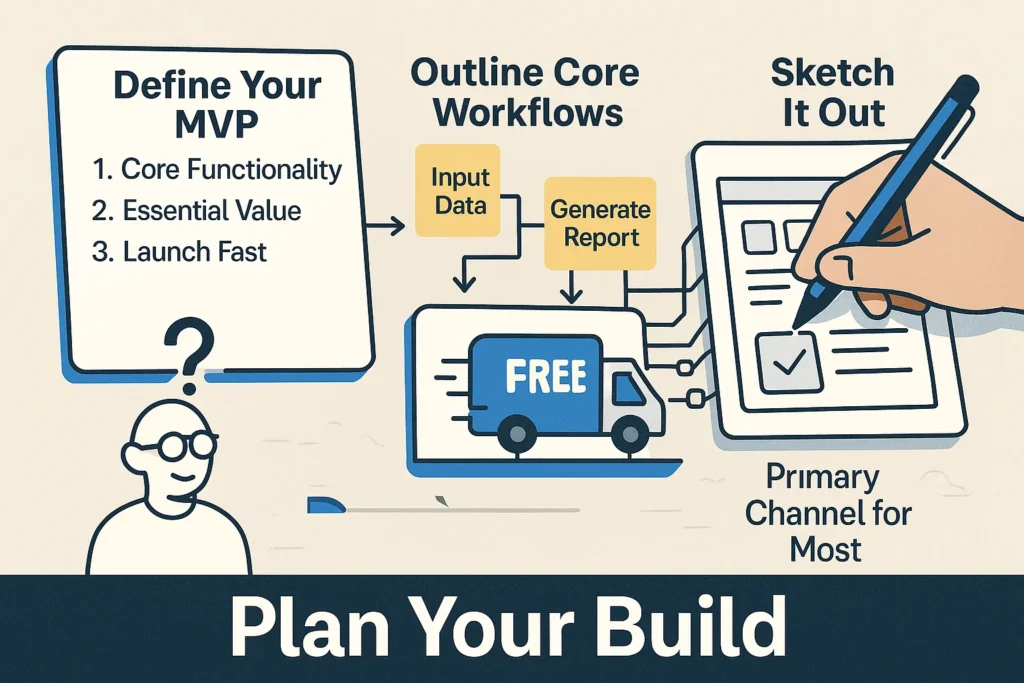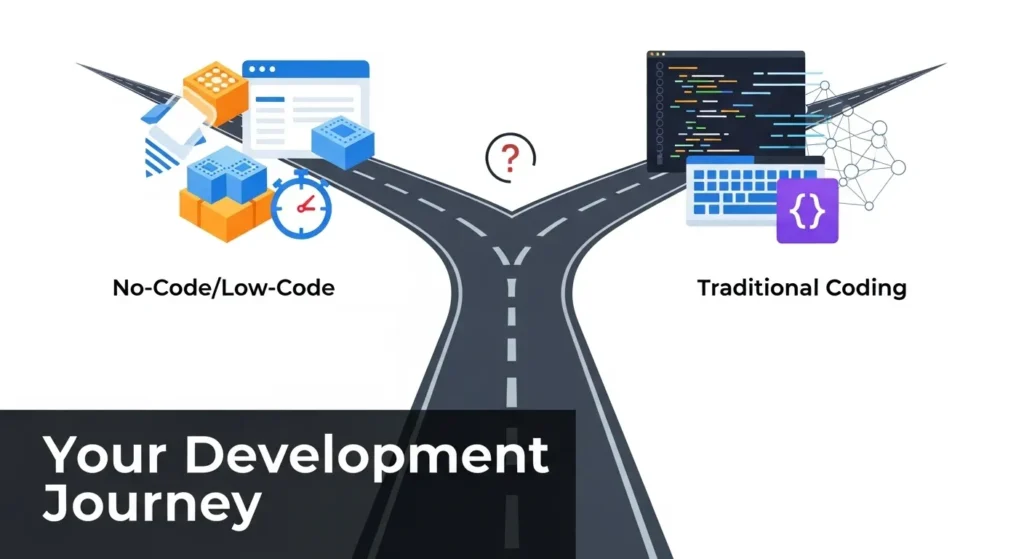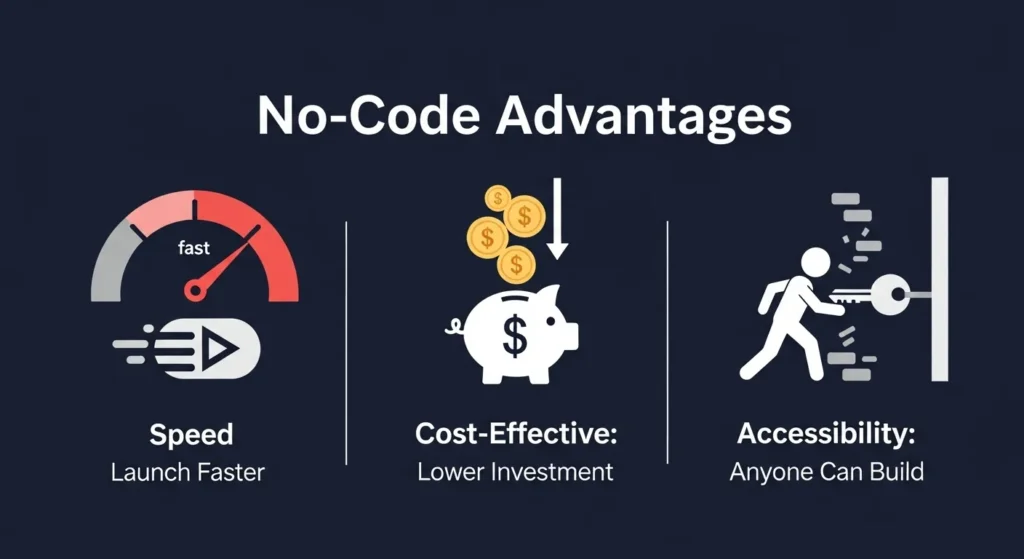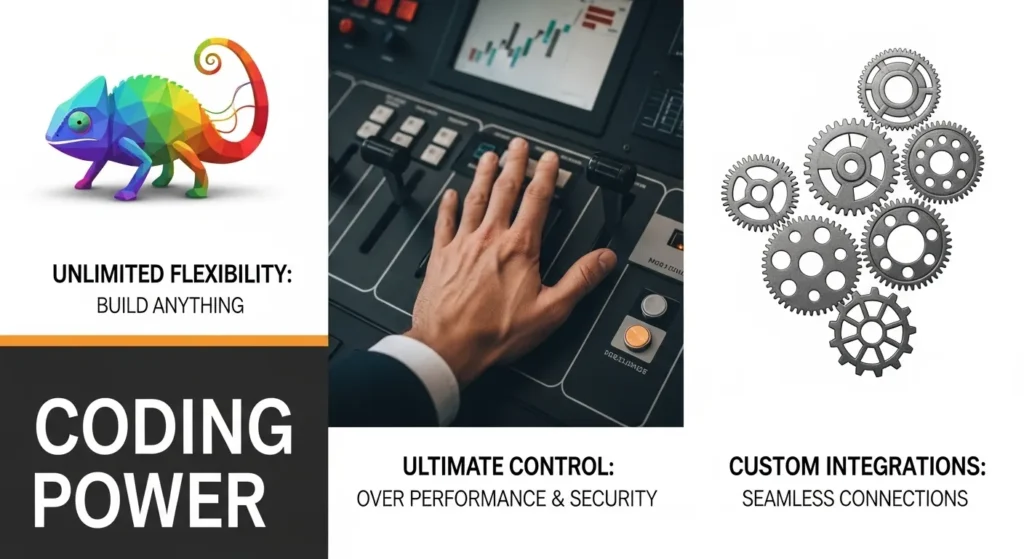You’ve got a fantastic idea for a micro SaaS, and you’ve even identified a promising niche. That’s a huge step! Now comes the exciting part: actually building your product. For many, this brings up a big question: do I need to code micro SaaS, or are there other ways? The good news is, you have more options than ever before. This article will guide you through the first steps to micro SaaS development, exploring both traditional coding and the rapidly growing world of no-code platforms.
This guide is a segment of our complete micro SaaS journey. For the full picture on finding ideas, building, growing, and even selling your micro SaaS, read our ultimate guide: The Ultimate Guide to Micro SaaS: From Idea to Exit.
The Very First Steps to Getting Started
Before you even think about writing a single line of code or dragging a single no-code block, you need to be clear on what you’re building. Assuming you’ve already validated your idea (a crucial step we cover in another guide), these are your immediate next actions:
- Define Your Minimum Viable Product (MVP): Don’t try to build every feature you’ve ever dreamed of. For your first version, focus on the absolute core functionality that solves your users’ main problem. What’s the smallest, simplest thing you can build that provides real value? This lean approach helps you launch faster and get feedback sooner.
- Outline Core Workflows: How will users interact with your software? Map out the main steps they’ll take to achieve their goal. This could be a simple flow like “User signs up -> User inputs data -> User gets desired output.” This clarity will guide your building process.
- Sketch It Out (Wireframing/Prototyping): You don’t need fancy software. Grab a pen and paper, or use simple digital tools, to sketch what your product will look like. Where will buttons go? What information will be displayed? This helps visualize your product and catch potential issues early.

Remember, a well-validated idea is crucial before you start building. If you haven’t done this yet, we highly recommend reading our guide: How to Validate Your Micro SaaS Idea Before Building.
Do I Need to Code My Micro SaaS? The Big Question
For a long time, building software meant learning how to code. But times have changed! The question of do I need to code micro SaaS no longer has a simple “yes” answer. It largely depends on your goals, your available time, your budget, and the complexity of your idea.

Many successful micro SaaS products today are built by non-coders. This is thanks to the rise of powerful, user-friendly tools that let you create fully functional software without writing any traditional code.
Exploring Your Options: Coding vs. No-Code
Let’s look at the two main paths for how to start building micro SaaS:
The No-Code/Low-Code Path
This path is gaining massive popularity, especially for micro SaaS founders who aren’t traditional developers. No-code micro SaaS platforms let you build web applications and automations using visual interfaces, drag-and-drop elements, and pre-built components.
Benefits of No-Code:
- Speed: You can launch your MVP much faster, sometimes in days or weeks, not months.
- Cost-Effective: No need to hire expensive developers initially, though platforms have subscription fees.
- Accessibility: Anyone with a good idea can become a builder, lowering the barrier to entry.
- Flexibility: It’s often easier to make quick changes and test new ideas based on user feedback.

Popular No-Code Micro SaaS Platforms
- Bubble: A powerful platform for building complex web applications with robust databases and workflows. Great for custom dashboards, marketplaces, and more.
- Softr: Excellent for turning data from tools like Airtable or Google Sheets into polished, user-friendly websites and web apps, including membership sites and client portals.
- Webflow: While primarily a website builder, its advanced features and CMS allow for the creation of sophisticated web applications, often combined with other tools for backend logic.
- Glide/Adalo: Fantastic for building mobile-first applications quickly from spreadsheets or visual interfaces.
- Zapier/Make (formerly Integromat): These are automation tools that let different apps “talk” to each other, creating powerful workflows without any code. While not for building front-end apps, they are crucial for connecting no-code tools.
When No-Code is a Great Fit: If your micro SaaS solves a specific problem that doesn’t require extremely complex or unique real-time interactions, heavy custom algorithms, or deep integrations with obscure systems, no-code is an excellent starting point.
The Traditional Coding Path
If you have coding skills, or if your micro SaaS idea is highly specialized and requires unique, complex functionalities, coding remains a powerful option. This involves writing code in languages like Python, JavaScript (with frameworks like React or Node.js), Ruby on Rails, or PHP.
Benefits of Coding:
- Unlimited Flexibility: You can build anything you can imagine, without the limitations of a platform.
- Ultimate Control: Full control over every aspect of your application’s performance, security, and scalability.
- Custom Integrations: Easier to build deep, custom integrations with other services.
When Coding is Often Necessary: If your micro SaaS relies on very complex custom algorithms, real-time data processing at scale, unique security requirements, or needs to integrate with highly specific legacy systems, a coded solution might be the best long-term path.

Consider the development costs associated with different approaches. While no-code can be cheaper initially, scaling custom code can sometimes be more cost-effective in the very long run, though it starts with a much higher upfront investment. We’ll explore these financial aspects in more detail in our guide on: Understanding Micro SaaS Development Costs.
Choosing Your Path Forward
For the first steps to micro SaaS, the decision between code and no-code often comes down to your personal skillset and how quickly you want to get your product in front of users.
- If you’re a non-technical founder: Embrace no-code. It’s the fastest way to test your idea with a real product. You can always switch to a coded solution later if needed, once your business is proven.
- If you’re a developer: Consider starting with no-code for speed, or choose a tech stack you’re already familiar with for rapid development. Don’t over-engineer your MVP.
No matter which path you choose, the goal for your initial build is always the same: get a functional product into the hands of your target users as quickly as possible to start gathering real feedback and generating revenue.
You’ll want to explore various tools and tech stacks relevant to your chosen path. We cover these in more detail in our guide: Essential Tools & Tech Stack for Micro SaaS.
Ready to Build Your Micro SaaS?
Taking those first technical steps can feel daunting, but with a clear plan for your MVP and an understanding of the powerful no-code and coding options available, you’re well on your way. Focus on building the core solution, getting it into users’ hands, and iterating based on their feedback.

